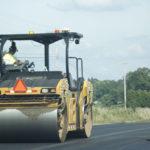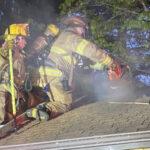WASHINGTON DC – More than two years after a tragic accident that killed six when a Metro-North train struck an SUV on the tracks at a crossing in Valhalla, the National Transportation Safety Board has issued its comprehensive findings.
Five of the dead were passengers in the front car of the Metro-North train. The driver of the SUV also died.
6½-foot piece of the third rail. A more than 300-foot segment skewered the lead car (below). Investigators concluded
the rail was not designed to properly break up on high impact.
The NTSB concluded none of the following were factors that contributed to the February 3, 2015 disaster:
the mechanical condition of the train or sport-utility vehicle,
the engineer’s performance,
environmental factors and weather,
the condition of the track,
the condition of the railroad signal system,
fatigue of the engineer,
cell phone use while operating the train or sport-utility vehicle,
the use of alcohol or other drugs by the engineer.
There was also no evidence of the SUV driver having any medical conditions, fatigue or use of alcohol or drugs.
One key factor was the 49-year-old SUV driver stopping on the tracks, getting out of her vehicle, then back in, and then not moving after the crossing gates came down: “… reducing the available time to clear the grade crossing by exiting the vehicle after the grade crossing warning system activated because the driver’s attention was diverted by the grade crossing warning system crossing gate arm striking her vehicle.” With the gates down, there was not enough room for the SUV to avoid getting hit by the train without it breaking through a gate, but it could have moved enough to mitigate the impact.
Loss of “situational awareness,” suggesting the driver became unaware of her predicament, was a point raised during the discussion, which involved board members, and several experts.
Robert Hall is the director of the Office of Railroad, Pipeline and Hazardous Material Investigations.
“Staff just notes that there’s no finding that supports that and to add that to the probable cause, we would want to see a finding of loss of situational awareness,” Hall said. He noted that the one person who could testify to what she was aware of, the SUV driver, died in the crash.
Also critical was the third rail, which impaled the lead car of the Metro North train, traveling at 51 miles per hour. The third rail was not “… constructed to fail in a controlled manner …” under severe impact. Better design could have lessened the severity of the disaster, investigators concluded.
Several spot fires erupted in the coach, apparently caused by sparks. Evidence suggests, however, that the third rail lost its 700-volt power at time of impact.
Accessible escape windows likely reduced the number of fatalities and injuries, but the third rail impeded access to the windows for some passengers.
A lesser factor contributing to the crash was the design of the Commerce Street crossing, at a 60-degree angle, rather than the 90-degree, or perpendicular design of other crossings in the Town of Mount Pleasant, which has recommended closing the Commerce Street crossing.
Some interim changes were made following the disaster, including repositioning the triggering mechanisms closing the crossing gate, allowing for more time to clear traffic before the train speeds by.
Recommendations for future actions include thorough risk assessment at all levels from railroad administration, departments of transportation at the state, county and local levels and corrective action where needed.
Acting Chairman Robert Sumwalt, said the goal of the lengthy investigation is for all to learn, especially those on the road.
“But in grade crossing accidents, a lot comes down to the everyday drivers,” Sumwalt said. “Any such crossing in any town is potentially the site of a future tragedy. The ultimate risk is in the hands of the driver because the next train is always coming.”
The board voted unanimously to accept the findings and recommendations.







